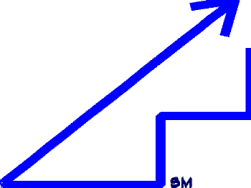Getting to "Yes!"The customer effect system works for the purpose of getting our customers to say "Yes"! When we are developing and delivering a service or product, we may try-out a lot of things that the customer doesn’t want before we find the things that make our services and products exactly what our customers do want. This is the problem of getting to "yes".We would like to be efficient and get directly to the exact thing that the customer wants: we make it, show it to them and they say, "Yes, that’s exactly what I want". This is possible under certain conditions such as: we know the customer very well, we’ve done these kind of services or products many times for this or for similar customers, there is nothing either new to us or technically challenging about providing the service or product. If all of these things are true then we can be very efficient and provide the service or product on the first attempt and actually satisfy the customer’s need, and make them happy enough to come back.However, when we are faced with a real customer, one who’s needs are not entirely clear to us, or when they seem to want a product that is new or technically challenging to us we need to test with them. We make a version of the product (perhaps a prototype, a similar product from somewhere else, or a model) and show it to them and watch for their reaction. How they say "no" is very instructive, and if we can engage them in a dialog about the differences between what they need and what we’re showing them we can learn exactly what they want, and can learn to provide it exactly to them. This is very effective, because they get something that is based on their precise needs as we have defined them together in our conversation of "no’s" leading to the final, happy "yes"!
There is a trade-off between being direct and efficient, and being iterative and effective. We want to get to "yes" as quickly as possible, yet it’s impossible to satisfy all of our customers with the first idea; therefore we want to be good at iterating, at the dialog that starts with "no" and leads to "yes" as we learn to produce the new product that the new customer wants.Businesses who provide products that are commodities probably deal with customers who expect efficiency. These customers expect your added value to come from consistent, standardized handling and processing that moves the product quickly to exactly where it’s supposed to be. The question here is, can we do things right, and handle these products in the safe, predictable way that the customer expects?Service providers know that their customers often don’t know what to expect and that there will be some negotiating concerning what is included in the service. These customers are concerned with effectiveness. The question here is are we doing the right things to learn to satisfy the customer’s needs?In either case we can optimize the processes: to be more efficient by concentrating on practice and product control; to be more effective by concentrating on managing and supporting the dialog. We need to be both efficient and effective; our processes need to help us understand the shortest distance to "yes".กก |

